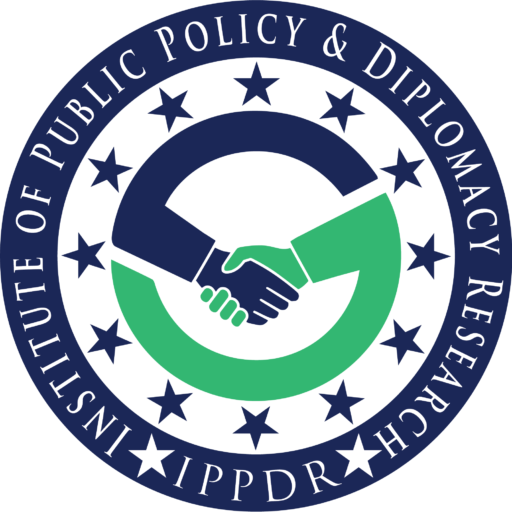The Role of Sustainable Development for Human Rights
Presently, NHRIs are completely consistent with global requirements in 79 of the 193 United Nations Member States (39%). Since 2015, 7 countries got reached this goal. NHRIs in a variety of other Member Countries are attempting to achieve certification. By 2030, hardly 54% of countries will have these vital organizations, based on current trends. This is insufficient to bring about the necessary transformation. Member Countries should perform more efficiently develop and sustain NHRIs, and the global community may do more to strengthen them. Researchers at UN development program have made a conscious and proactive effort to promote NHRIs. Since 2008, entities from 90 countries have indeed been enhanced by our involvement, which is typically in the perspective of a Tri-Partite Alliance (with the United Nations Human rights Commission as well as the Global Alliance of NHRIs).
NHRIs could also assist in identifying some of the major difficulties that individuals confront and how they are experienced by diverse demographics. For example, between 2016 and 2018, UN development program worked with the Ukrainian Ombudsman’s assistance to meet civil society seek out to approximately 200 representative groups in order to truly comprehend people’s perspectives of human rights issues.
Furthermore, in 2018, UNDP assisted National Human Rights Commission in Bangladesh holding a dialogue involving human rights activists, and therefore is presently assisting the commission in providing practical regulations to support and enhance such efforts. NHRIs were contributing for humanitarian rights and the sustainable development all around the globe; we need to coordinate our initiatives so that more nations could get benefits. Such actions must go well beyond developing strong global humanitarian organizations and assuring that SDGs were implemented to ensure which benefits everyone in the area.
The Relationship between Sustainable Development and Human Rights
Human rights and sustainable development are inextricably linked. Human rights and sustainable development have long been a source of contention. It’s possible that the specific interactions among them are still undetermined. Human rights are indeed an intrinsic facet of sustainable development, a prerequisite for advancement, or the final result of improvement, according to opposing perspectives. Nonetheless, the notion that humanitarian rights are important in developmental projects are growing rapidly. The widely accepted ratification of the worldwide UN human rights agreements including the ”Convention on the Elimination of All Forms of Discrimination Against Women” (CEDAW) with 196 ratifications and ”Convention on the Rights of the Child” (CRC) with189 ratifications, respectively and the 164 to177 ratifications of the “International Covenant on Economic, Social and Cultural Rights” and “Convention on the Rights of Persons With Disabilities”, “International Covenant on Civil and Political Rights, and the Convention on the Elimination of Racial Discrimination” have been significant influences in the advancement of the aforementioned idea. A strategy focused on human rights was increasingly viewed as developing the ability to effect major improvement. “The global human rights legislative framework, under which all countries have signed, must be considered as effective solution and the fundamental pledge towards sustainability,” said the former High Commissioner for Humanitarian rights in 2008. In fact, a very common human rights and justice approach has arisen throughout time, such as HRBAs for growth among both government and non-governmental sectors. Evidence is increasing that developmental projects are collapsing, or at the very worst not attaining their full potential, due to a lack of focus on unfairness, injustice, social ostracism, and marginalization. Most of these elements are at the core of human rights movements. Estimations of international and country-level progress toward the Millennium Development Goals (MDGs), as well as some other pertinent evaluations – including the UNDP’s yearly basis Human Development Reports (HDR) and UNICEF’s annual State of the World’s Children reports – have clearly demonstrated the significance of combating disparities (e.g., centred on sex, age, ethnic origin, developmental disorder, food insecurity, sexual orientation, or geographic location) and following inclusive development. The MDGs’ essence has “stimulated many states to concentrate upon those who were easiest to achieve”, which has ultimately led to the neglect of the scenario, necessitates, and privileges of especially susceptible or disadvantaged population, such as indigenous populations, individuals with disabilities, or residing in remote rural regions. “there is an evidence that improvement was accomplished by the fairly better off, instead of those who were the most susceptible and alienated,” Stuart and WoodRoffe said that ”Indicators for the Millennium Development Goals are persistently poorer for underprivileged groups throughout all regions.”
Under global human rights law, and Agenda 2030 for Sustainable Development, data for all targets needs to be collected and disaggregated by the prohibited grounds of discrimination under international human rights law, including the values, security and progression of human rights and fundamental liberties for all, without discrepancy of creed, complexion, gender, linguistic, religion, political and further belief, national or societal origin, assets, infirmity or additional status Following are the details of every SDGs with related human rights
Goal 1: No poverty Right to a suitable and decent standard of life. Right for societal security, Equivalent human rights for females in economic life.
Goal 2: Zero Hunger the rights for proper nutrition and International collaboration, which includes ensuring a fair distribution of global food supply,
Goal 3: Good health and well-being the health rights for living of mothers and their kids and ensure special protections for the females. Global cooperation, especially those associated to the fundamental human rights to enjoy the welfares from science and technology and its applications.
Goal 4: Quality Education the education rights especially for those with disability and native tribes. Equitable educational opportunities for females. Freedom to employment, encompassing skills acquisition from technical and vocational trainings Global cooperation, specifically in the context of disabled children as well as indigenous populations.
Goal 5: Gender Equality the rights to choose the numbers and age gaps among offspring, especially in legislative, political, socioeconomic affairs, cultural aspects and family connections. Working women were given special protection in the workplace. Harassment targeting females should be prohibited. The right to reasonable and suitable employment conditions.
Goal 6: Clean water and Sanitation
The rights of accessibility of safe and clean drinking water and proper germ-free sanitation structures Rights to wellbeing and equitable access to water resources and better sanitation for rural women.
Goal 7: Affordable and clean Energy the rights for satisfactory standard of living. Right of having availability of uninterrupted and affordable energy supply for all, human rights to avail the benefits of innovations and developments in the field of science and technology and its application in daily life.
Goal 8: Decent Work and Economic Growth
Restriction of slave ownership, forced labour, and human smuggling. Equal human rights for female workers at the workplace environment. Restriction of forced child labour. Equal job opportunities for foreign workers.
Goal 9: Industry Innovation and Infrastructure Freedom to profit from scientific advancement as well as its applications. Rights to knowledge. Access to sufficient accommodation, comprising land and natural resources and equitable access to financial loans and infrastructural development for males and females
Goal 10: Reduced Inequalities The rights to equality as well as non-discrimination in the workplace. The human right to participate in the public affairs. Sustainable development goals ensure the freedom of refugees to transfer their salaries and assets. Promotion of global immigration opportunities.
Goal 11: Sustainable Cities and Communities Rights to sufficient shelter, especially land and resources. Opportunities to engage in cultural activities. Accessibility to transports, institutions, and services, especially for people with disability. SDGs ensure safeguarding from natural catastrophic events.
Goal 12, 13, 14, 15: Responsible Consumption and Production, Climate action, Life below water, Life on land hasthe human rights for wellness, which includes the access to clean, productive, and sustainable environment. The rights of having access to enough nutrition food and potable water. Freedom for all inhabitants to utilize their environmental assets independently.
Goal 16: Peace Justice and Strong Institutions ensure the protection of children from across all types of violence, torture, or abuse, especially child prostitution. Equal access of all the peoples to the courts and constitutional protections, Legal personality, Rights to engage in public matters, Freedom to gain knowledge education and awareness.
Goal 17: Partnership for the Goals Human rights for having self-determination mutual trust for all citizens and development and global partnership for all peoples. Rights of everyone to advantage from scientific advancement and its applications, which include worldwide scientific and academic cooperation. Rights of having privacy, along with respect for human dignity and moral values in the acquisition and use of statics.





1 Comment
Join the discussion and tell us your opinion.
I’m so grateful to have been part of the GYSIL 2024 cohort! The program has equipped me with the skills, knowledge, and network to make a positive impact in the world. Thank you IPPDR for your dedication to empowering young leaders. I’m honored to be part of this community! #GYSIL2024 #IPPDR #GlobalLeadership